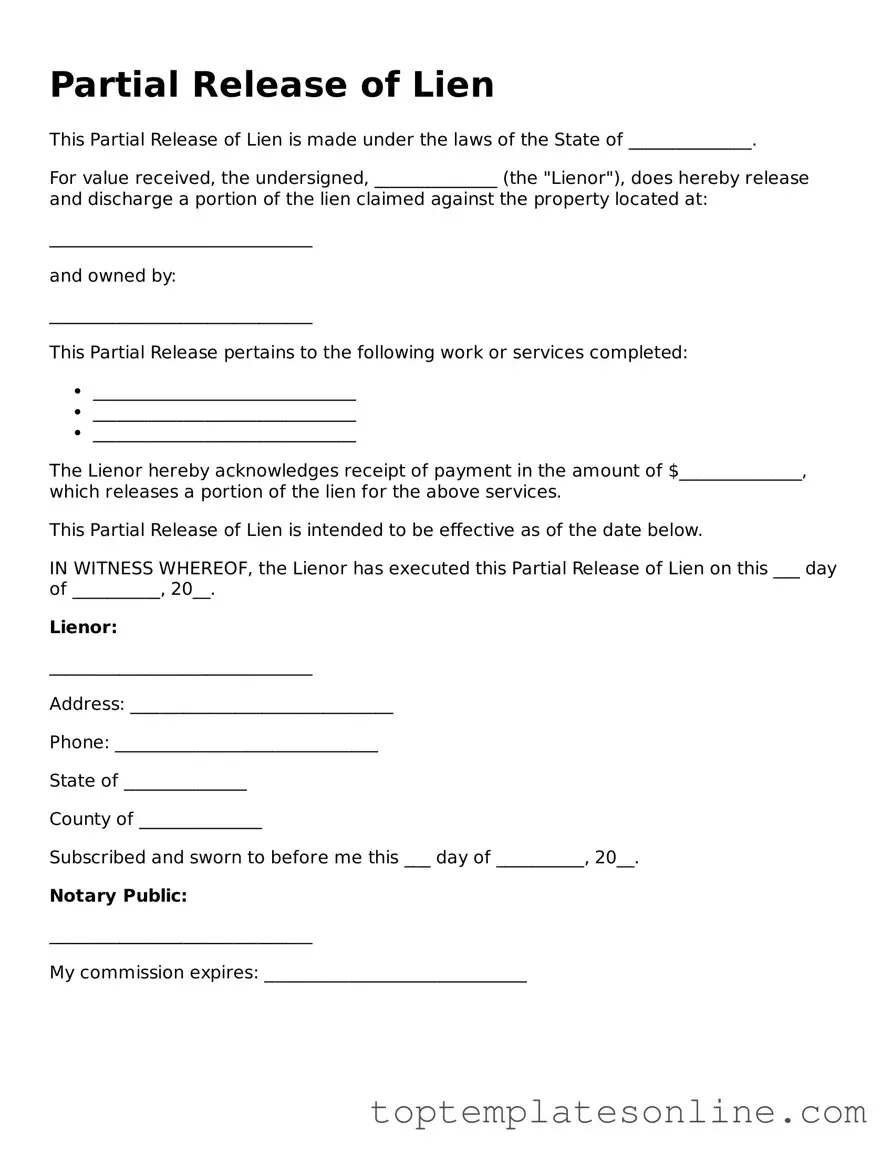When navigating the complexities of property transactions, understanding the Partial Release of Lien form is essential for both property owners and contractors. This document serves as a critical tool in the construction and real estate industries, allowing for the release of a lien on a property for a specified portion of the work completed or a specific amount paid. By utilizing this form, a contractor or subcontractor can formally acknowledge that they have received payment for their services, thereby lifting the lien from the property to the extent agreed upon. This not only helps in clearing the title of the property but also fosters trust and transparency between the parties involved. The Partial Release of Lien form typically includes essential details such as the names of the parties, a description of the property, the amount of payment received, and a statement confirming the release of the lien. Completing this form accurately is vital, as it protects the interests of both the lien claimant and the property owner, ensuring that the property can be freely sold or refinanced without the encumbrance of unresolved claims. Understanding how and when to use this form can significantly impact the efficiency and success of property transactions.
